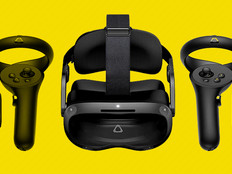Three New Tablets Hit The Market
Tablet Tips
Lenovo ThinkPad X60 Tablet
Lenovo’s new X60 tablet is a step in the right direction for the ultraportable market. With low weight, high battery life and a powerful Intel Core Duo processor, the X60 is a solid contender for the student or the mobile teacher.
End-User Advantages
The X60’s new Core Duo 1.66- gigahertz processor is about 35 percent faster than last year’s X41 Pentium M at 1.5GHz, according to the computer program Super Pi. This is probably the largest improvement to performance on the entire machine.
The standard X60 model only comes with 512 megabytes of RAM, which is low and will cause some sluggish response. With all of the extra tablet software running in the background and Windows Vista requiring a minimum of 512MB, it’s recommended to either use the free memory slot to upgrade the memory to 1 gigabyte or buy an X60 with 1GB or 2GB of memory.
The 1.66GHz model includes three USB 2.0 ports, a PCMCIA slot, Firewire, an SD memory slot, and the standard network and audio ports. The X60 does a great job in both battery life and weight. With the upgraded eight-cell battery, the X60 can last up to six hours. Yes, I actually tested this by completing Web-browsing, e-mail, and office documents with the wireless on and the screen brightness on the second-highest setting.
Add 802.11 a/b/g wireless, Bluetooth (optional), infrared, Verizon’s Evolution-Data Optimized EVDO (optional) and that makes the X60 a capable ultraportable notebook for people who need to be mobile.
Why the X60 Works for IT
The X60 is definitely not a desktop- replacement notebook, since it sports only a 12-inch screen. However, it does shine for those who need an extremely lightweight notebook. I love the ability to walk around with the notebook in one hand in tablet mode while taking notes with OneNote 2007, the Microsoft note-taking and information-management program. The Bluetooth functionality allows syncing of PDAs and other like devices a breeze. The optional fingerprint reader allows a user to log on to his or her computer, e-mail or a specific program or Web site — all with a swipe of the finger.
Disadvantages
Most of the disadvantages of the X60 are also advantages, depending on how you look at them. The notebook does not have an optical drive, but with the weight of the notebook and most programs going to digital downloads, this is less of a problem than in the past.
If you have several programs you must install via a CD/DVD or you want to make your own CD/DVDs, you’ll need to buy an external optical drive, which can cost $50–$150. Screen size is also a problem for anyone used to larger screens, but the upside is the weight and battery life. The X60 also does not have a touchpad — personally, I think this is a good thing.
- CDW•G price: $1,799 for the 1.66GHz model
Asus R1F
 Asus Specs:
Asus Specs:
Processor: Intel Core 2 Duo T5500 (1.66Ghz)
Weight: 4.1 pounds
Battery Life: 3 hours
Hard Drive: Up to 120 GB
Size: 31.7 x 23.2 x 3.5 cm
The Asus R1F convertible tablet PC has the right hardware at the right price. The R1F offers great performance in a small package. From its powerful but battery-friendly CPU to its gorgeous 13.3-inch WXGA screen and the added DVD/RW optical drive, the R1F can go toe-to-toe with just about any tablet PC on the market. The ability to use the R1F as a notebook and a tablet PC makes it a viable option for students and school officials.
End-User Advantages
First, the specs: The Asus R1F comes with an Intel Core 2 Duo T5500 (1.66 gigahertz) processor. I found the R1F processor to be as fast as the Lenovo X60 (Intel Core Duo 1.66GHz) and a little bit behind the HP Compaq TC4400 (Intel Core 2 Duo 2.0GHz). The standard package includes 512 megabytes of DDR2 667MHz RAM, but I recommend a $55 upgrade to at least 1 gigabyte, a must for any notebook.
The R1F has two memory slots, each able to hold 1GB. One of the great things about this notebook is the 8x DVD/RW optical drive, which comes standard. The notebook weighs in at about 4 pounds with the six-cell, three-hour battery. The R1F comes with all the expected notebook connections, including three USB ports, VGA port, audio jacks, etc. Built-in Bluetooth, 10/100/1000 Ethernet and 802.11 a/b/g wireless allow for several different network connectivity options. The R1F also comes with a fingerprint reader and an express card. The express card technology is basically PCMCIA 2.0.
Using the pen in tablet mode is a wonderful experience. The pen included with the notebook is very lightweight, has an eraser to fix mistakes and does a great job on the screen.
Disadvantages
There is not much that I can complain about on the R1F. The battery life is only three to four hours, but that is what happens when you have a 13.3-inch screen and an optical drive. That’s why some choose the smaller 12-inch screen notebooks that boast eight-hour battery life. There is no built-in broadband card, which might be a plus for some users who want to choose their own provider and stick in an aftermarket card. Personally, I think one less thing sticking out of my notebook is a good thing. The screen could be more vibrant but it gets the job done. The pen does feel cheap, but I have yet to find a tablet pen that does not feel the same way.
- CDW•G price: $1,699
HP Compaq TC4400
 HP Specs:
HP Specs:
Processor: 2-GHz Intel Core Duo T2500 processor
Weight: 4.6 pounds
Battery Life: 3 hours
Hard Drive: 80GB
Size: 28.4 x 23.6 x 3.6 cm
The HP Compaq TC4400 convertible tablet PC takes all of the great features of the TC4200 and improves on them. Although identical on the outside, the TC4400 packs an Intel Core 2 Duo processor, up to 4 gigabytes of RAM and several other features that make this notebook a great buy for anyone in the tablet market. Backed by a great support department, this tablet needs to be on your list if you’re shopping for an ultraportable.
End-User Advantages
The HP TC4400 comes with an Intel Core 2 Duo 2.0-gigahertz processor, the fastest I have seen in a tablet. For an ultraportable, this processor bests anything out there in the tablet market. The TC4400 does a superb job in handling heat and noise. The fan is quiet and only kicks in when doing benchmarking. The standard model only includes 512 megabytes of RAM, but you can upgrade this to 4GB.
The LCD on the TC4400 is a 12.1-inch XGA 1024x768 touch screen. I was happy with the brightness and color of the screen, but it did not impress me. The screen does swivel around into tablet mode flawlessly. The TC4400 comes with a six-cell battery that provides about three hours of battery life doing normal office and Internet activities, with the wireless on. Wireless connectivity is provided by a built-in 802.11a/b/g card. The wireless works fine and handles all of the enterprise security such as WPA and Radius. The Vista wireless manager works well. Bluetooth is an add-on option.
IT Advantages
The HP TC4400 has the popular fingerprint reader and some great biometrics software to provide extra security if needed. I was able to set my fingerprint reader up to log me on to the computer and various Web sites, including my banking site. Swiping your finger does save time. The tutorial is quick and easy to follow. You have the option to use fingerprint only or use that plus a conventional login, so your company’s IT staff can still log in to troubleshoot problems.
The TC4400 comes with a three-year warranty and is backed by HP’s great customer service. People who love the mouse pointer in the middle of the keyboard will be happy to find one on the TC4400 along with a touchpad. It’s easy to switch back and forth from tablet mode to using the pen on the screen. Like most tablets, there are shortcut keys in tablet mode that help you perform commands.
Disadvantages
Battery life on the TC4400 is weak considering the smaller screen size, and there is no optical drive. I expected four hours but could only get three. Not having an optical drive is a problem for some, but it does cut out weight. If you use a docking station, there is an option to add on an optical drive for $150. The TC4400 is slightly heavier than the Lenovo X60.
- CDW•G price $2,329







